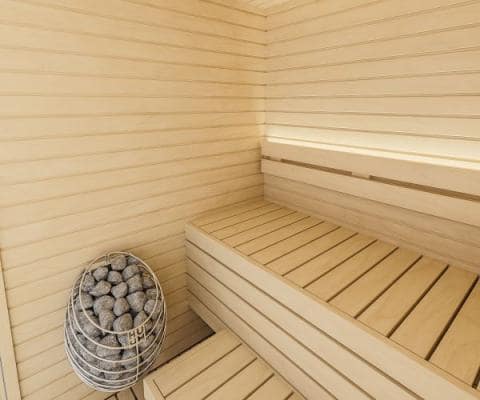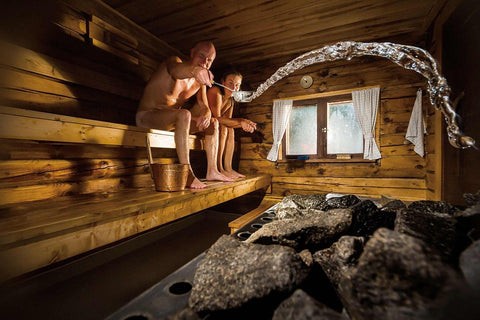Fascination About Traditional Sauna
Fascination About Traditional Sauna
Blog Article
Not known Details About Traditional Sauna
Table of ContentsThe Main Principles Of Traditional Sauna Some Ideas on Traditional Sauna You Need To KnowFacts About Traditional Sauna RevealedHow Traditional Sauna can Save You Time, Stress, and Money.The Ultimate Guide To Traditional Sauna
Most of the weight lost in a sauna is water loss and is re-gained upon rehydrating. However, undoubtedly sauna can be an integral part of a healthy and balanced weight-loss program. To take a look at the differences in between traditional and IR saunas, I will separate these right into verifiable, academic, and made differences.Therefore, the most popular point in the saunawhich is at the ceiling straight over the sauna heateris generally in between 185 and 190 F. Claims that a typical sauna surpasses 200 F is simply not true and not applicable for electrical saunas marketed in the US. The temperature level for a far-infrared sauna is usually established between 120 and 140 F; however, unlike the traditional sauna, the goal in and IR space is not to attain a heat.

When a traditional sauna has been correctly heated up, the sauna walls are cozy, the air temperature level has accomplished set temperature and the rocks are incredibly heated. As an intriguing side note, the warmed walls and the rocks are giving off far-infrared warm, combined with the heated air, to produce an "covering warm".
Getting My Traditional Sauna To Work
When the heat is attained, the elements cycle on and off to keep the heat. Most traditional sauna users enjoy pouring water over the rocks to develop vapor to elevate sauna moisture degrees. The benefits of pouring water over the rocks include: making the room more comfortable, dampening the nasal passages, and allowing the usage of aromatherapy by blending necessary oils with the water.

When the energy enters the body, it causes the body temperature level to boost and inevitably results in sweat. In an infrared sauna it is necessary for the emitters/heaters to remain on virtually constantly. Given that there is no mass of rocks to maintain warmth, the sauna will certainly cool down if the emitters turned off.
Traditional Sauna - Truths
As find more info stated over, the sauna bather in an infrared space wishes to place himself in front of running emitters to obtain optimal take advantage of the warmth. The heating time for the two spaces can be extremely different, relying on just how the spaces are used. For a typical sauna, a bather needs to enable 30-40 mins for the area to attain a preferred temperature and to appropriately pre-heat the rocks.

A well constructed sauna will generally achieve a temperature of 150-160 F in regarding 30-40 minutes (Traditional Sauna). For hotter temperatures, the area might need to heat for a longer duration. When the space attains established temperature, the heating unit will certainly cycle on and off, my link typically operating about 50% of the moment. The insulated wall surfaces and the warmed rocks will certainly keep the room warm and at stable temperature levels.
To some, 15 mins was "thrown away" while the infrared energy heated the wood panels instead of warming a body, while others locate a pre-heated space to be much more comfortable and believe an elevated starting temperature is essential to begin perspiring. The size of recommended usage for each and every space is around the same (10-15 minutes per session); however, because of the reduced air temperature levels and the capacity to really feel the results of infrared warm quicker than a typical sauna, it is not uncommon for a person to spend a total amount of 20-30 minutes in an infrared sauna.
What Does Traditional Sauna Do?

The typical expense per kWH of electrical energy in the U.S. is about $0.11, so a 4.5 kW heater will certainly set you back about $.50 to compete one hour, if the heating system runs constantly for one hour. Typically a sauna heating system will compete 75% of the very first hour and 50% of subsequent hours on because the elements cycle once the established temperature is accomplished.
A 2 individual far-infrared area is generally physically smaller than a typical sauna, commonly regarding 4' x 4' or smaller sized. The IR heating system is usually 1.5-1.7 kW making use of a 120 volt 15 amp plug-in service. Considering that the room can be made use of faster than a sauna room, we will certainly think the room is utilized for to of an hour including warm up time.
Finally, there is index a hardly ever discussed distinction in the social experience between both rooms. While our culture has actually shed a few of the social benefit of the standard sauna experience, it can be extremely socially rewarding (Traditional Sauna). From family members time in the sauna, to heart-felt conversations with better halves, to sauna partiesthe conventional sauna experience can result in intimate socializing
Getting The Traditional Sauna To Work
Many greater end infrared rooms include tinted light therapy, noise systems and full-glass fronts. The size of most rooms enable 2 individuals to comfortably use the area, while some styles may permit a third or fourth individual to use the space. Custom infrared rooms are also readily available, with area sizes offered up to 7' x 8' x 7' high.
Report this page